Fra Angelico was a humble monk who happened to be a great artist. In this post we look at his works in the Monastery of San Marco in Florence – this will be a short piece to complement my recent longer post on the Signorelli frescoes in the duomo of Orvieto in which I briefly introduced Fra Angelico.
To recap, the artist and Dominican friar known to his contemporaries as Fra Giovanni da Fiesole, to modern Italians as Il Beato Angelico and to Anglophone art historians as “Fra Angelico” was a talented artist of great piety and personal simplicity. In terms of the periods we ascribe to art history, he straddled late-medieval “International Gothic” and the Renaissance, and painted in both styles as the occasion demanded.
When Fra Angelico was executing commissions for important and wealthy clients, he painted in a formal style, and used the most brilliant and expensive colours. We saw an example of that in my photograph of the two ceiling panels which were all he completed in the Cappella Nuova in the Orvieto Duomo. I will reproduce the photograph again here to save you going to look for it.
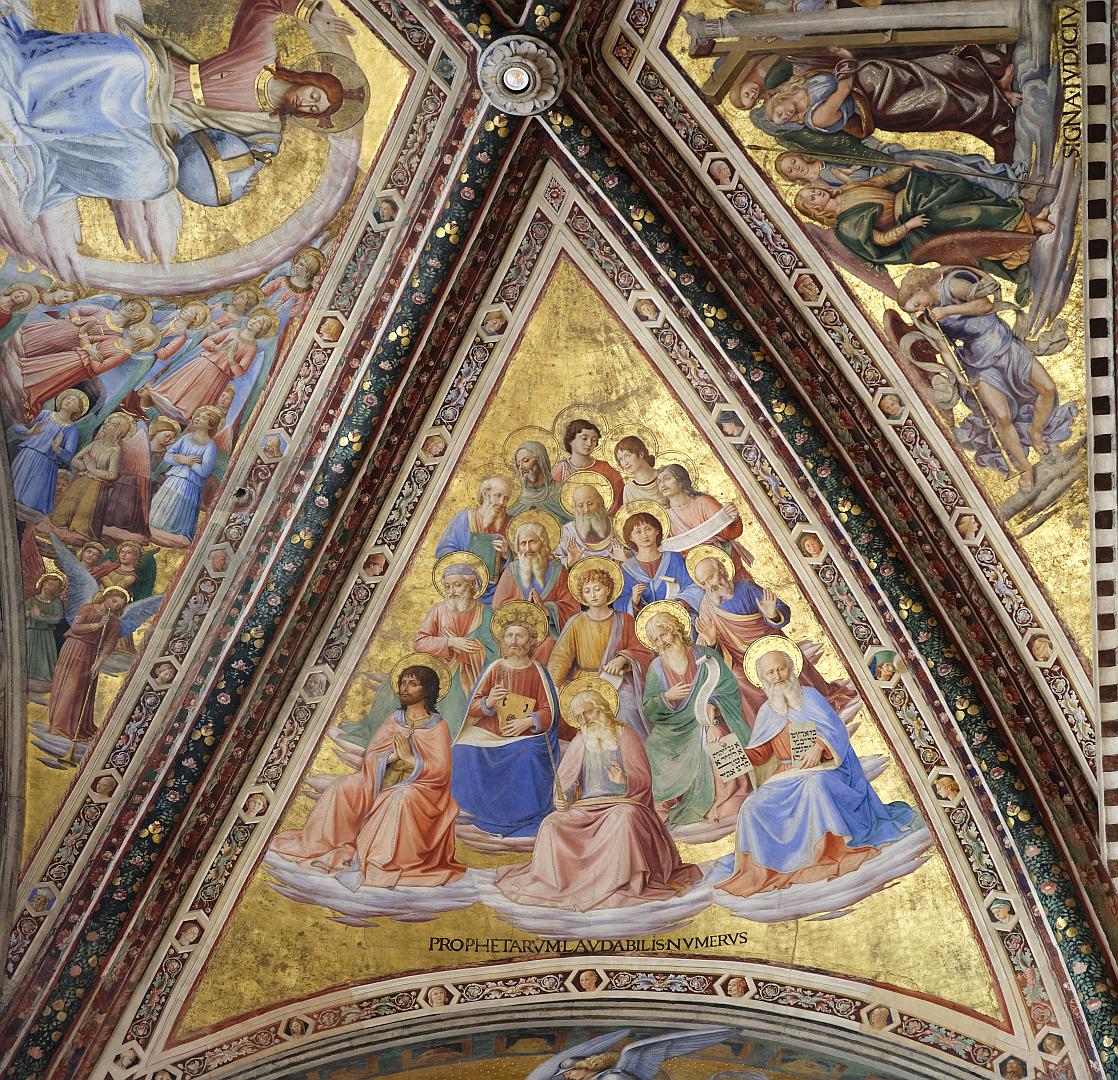
But there is another aspect to his painting, simpler in style, reflecting his own subject choices, and giving us a bit of an insight into the character of someone who Vasari described, a hundred years later, as not only rarely talented, but humble and modest (in contrast with some of Vasari’s other subjects). To see this side of Fra Angelico, you must visit the monastery of San Marco in Florence (nowadays officially the “Museum of San Marco” – you can buy tickets online at its website).
The Monastery of San Marco
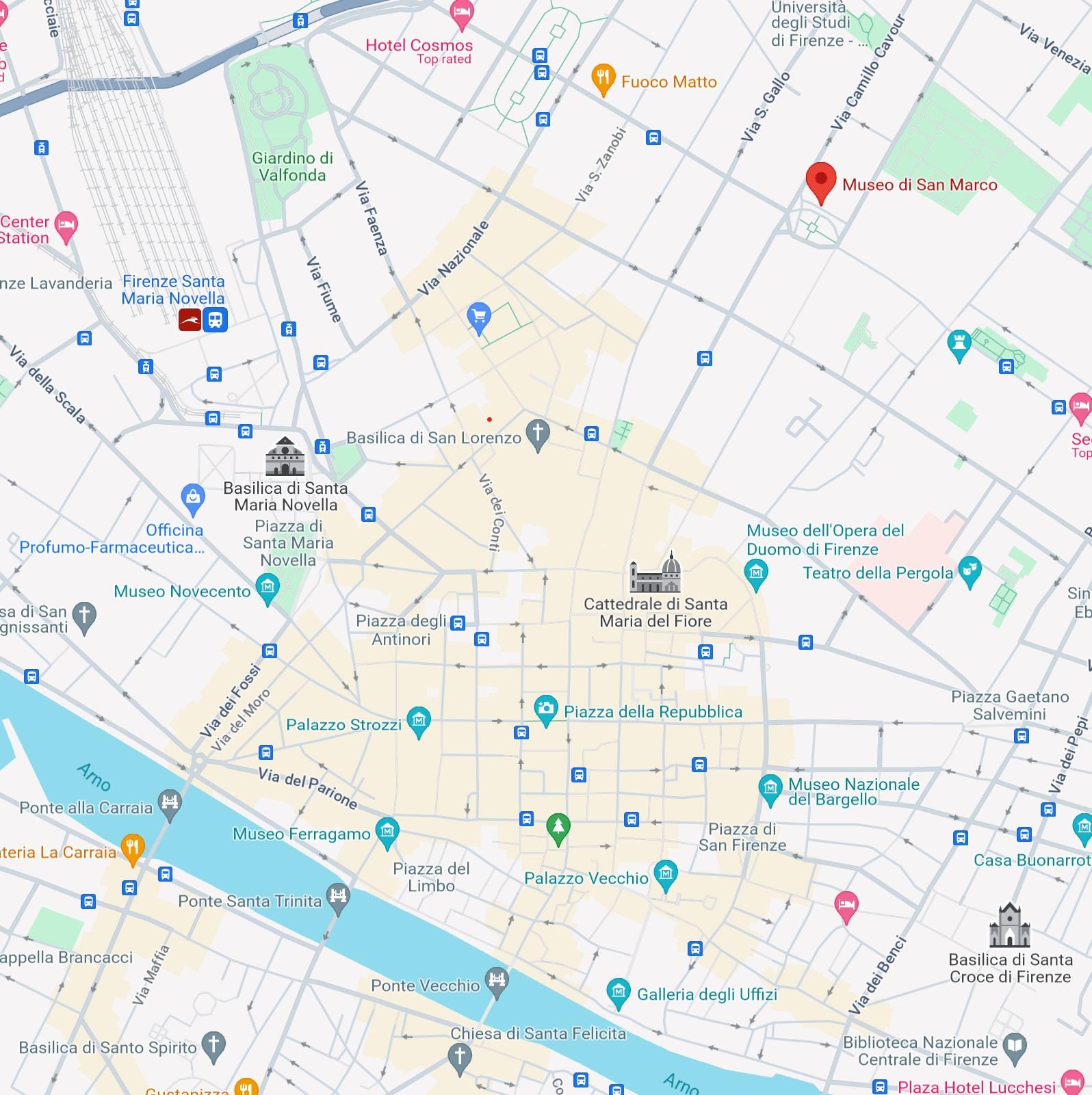
There had been a monastery, or a series of monasteries, in this location on the northern side of the city for a least a couple of hundred years when, in the 1430s, the previous order was evicted for their laxity. The property was made over to a group of Dominicans from nearby Fiesole, which included Fra Angelico. But the buildings were in poor condition and the new proprietors had to live in makeshift accommodation at first.
San Marco was in the part of Florence known as the “Medici quarter” and it was the head of that wealthy family and the de facto ruler of Florence, Cosimo de’ Medici, who decided to finance the rebuilding of the monastery in contemporary Renaissance style. And at some point it was decided that Fra Angelico and his assistant, Benozzo Gozzoli, would paint frescoes in various communal areas of the monastery and also in the monks’ cells.
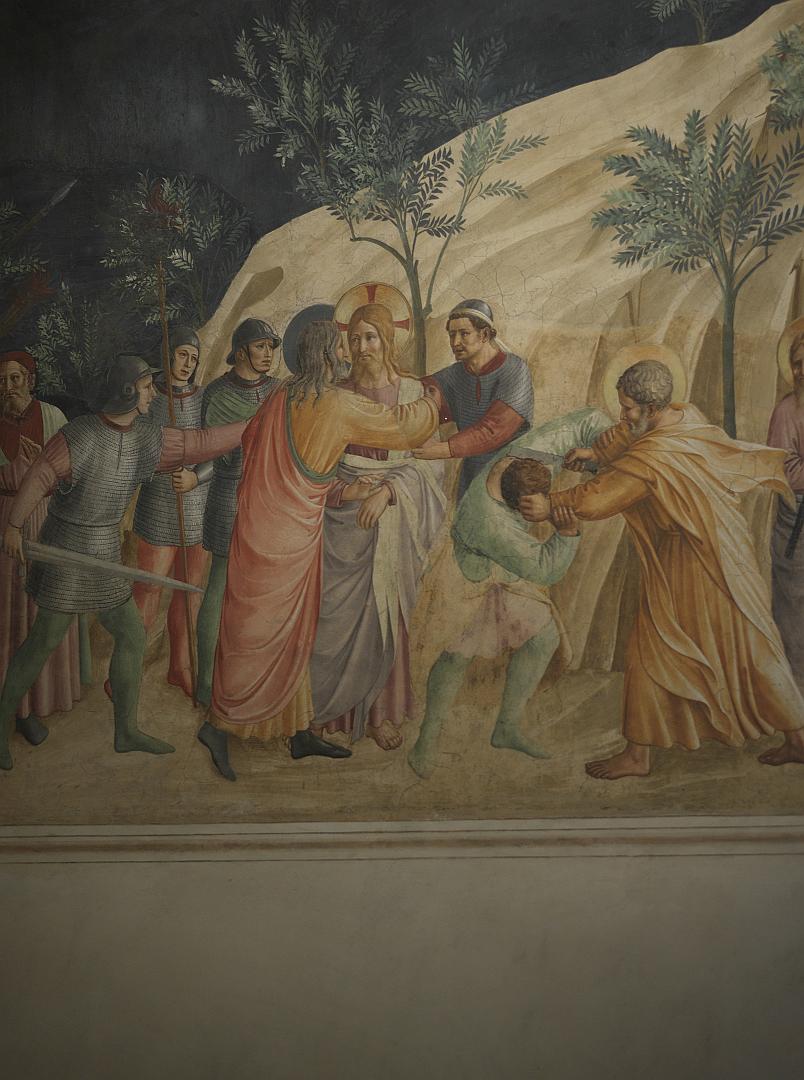
Probably the most famous of these is his Annunciation, which is a very simple scene compared to what he would probably have painted had he been commissioned to do something for a great cathedral.
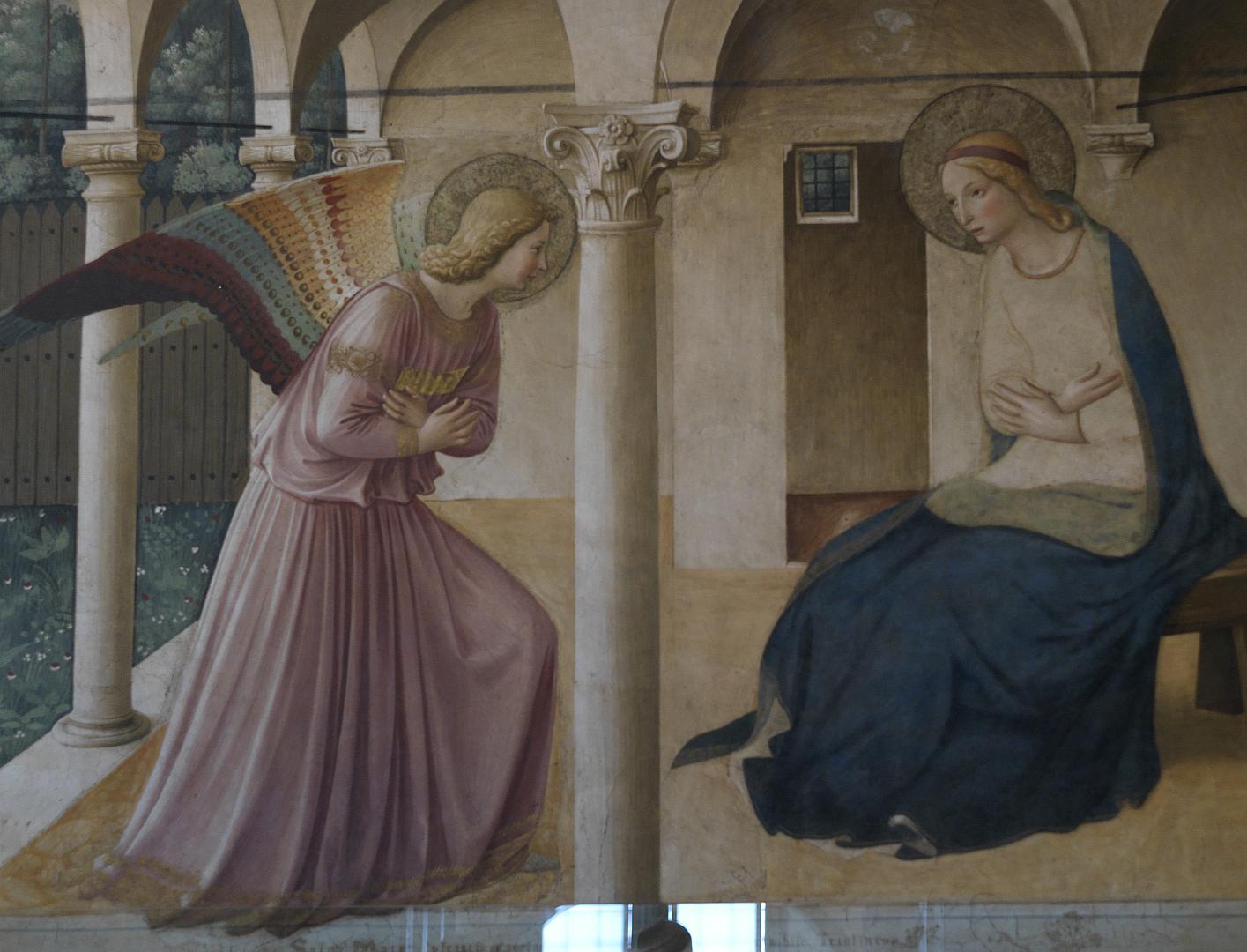
No doubt in gratitude for his generosity in financing the reconstruction of the monastery, Cosimo de’ Medici was granted a cell there, as a peaceful retreat from the pressures of running Florence while pretending to be just a normal citizen. It is about twice the size of the rest of the cells, but just as austere inside. For this, Fra Angelico put in a special effort. His Adoration of the Magi is very beautful – there is no gorgeous and complex background such as might be seen a similar work by Perugino, but the figures are elegant and richly dressed. Below that is a space for a little altar with an image of Christ.
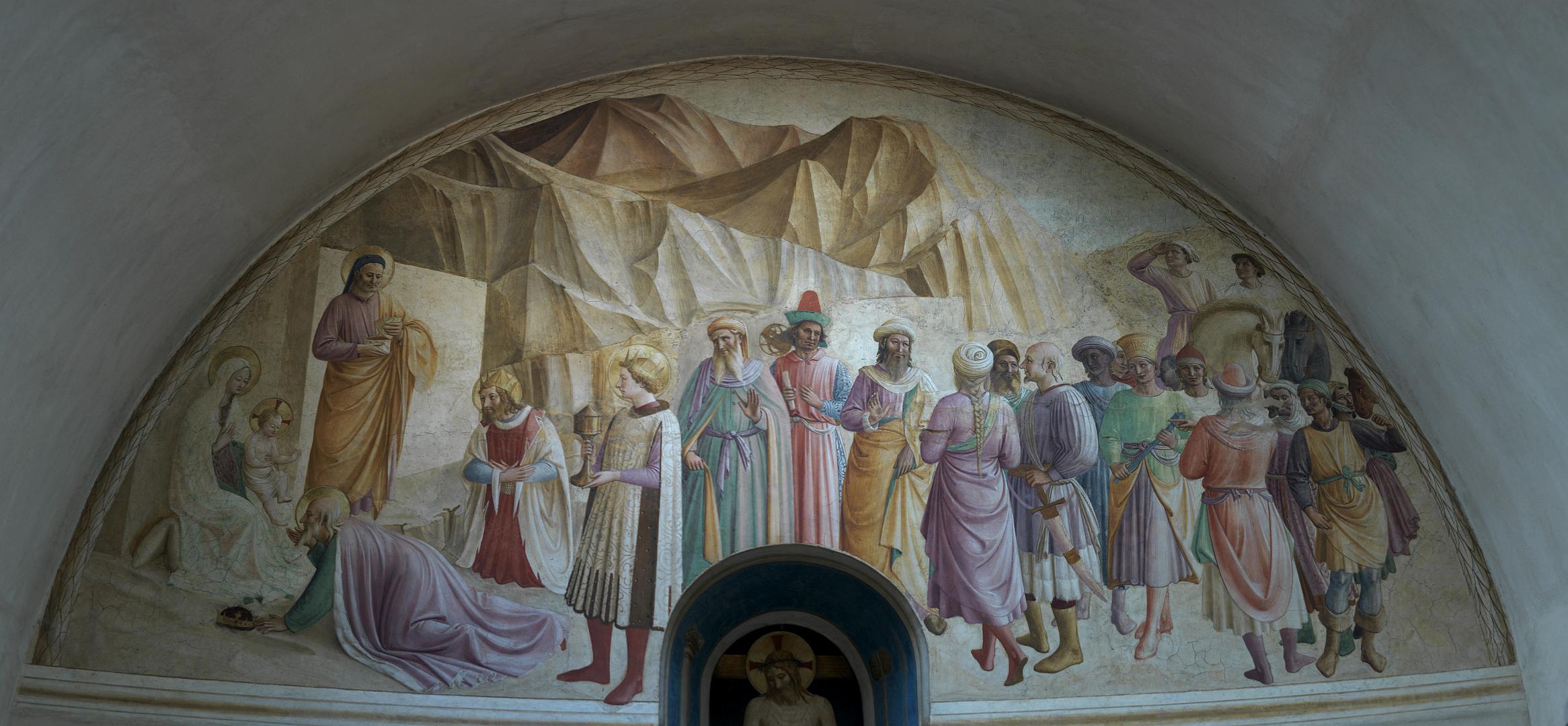
It is a special experience to visit Cosimo’s cell and imagining him there in silent contemplation, or perhaps reading letters brought to him from Popes and princes.
But despite the beauties of the Annunciation and Adoration of the Magi, the impression that stayed with me was that of a naive, almost cartoon-like literalness in his depiction of gospel scenes. In this Nativity the ox and the ass don’t quite take centre stage, but they certainly do not want to be just minor characters.
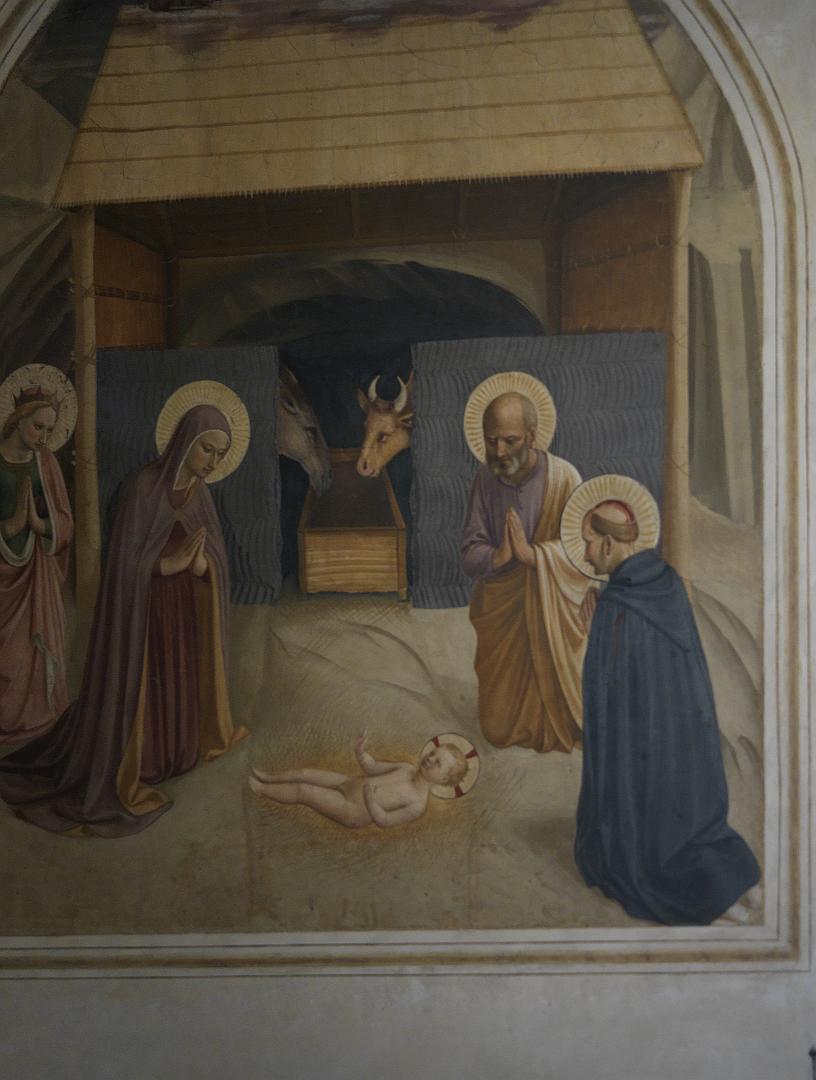
In this scene of the women at Golgotha on Easter Sunday, they are rather theatrically peering into the empty sarcophagus, while an angel points upward as if to say “he went that-a-way”.
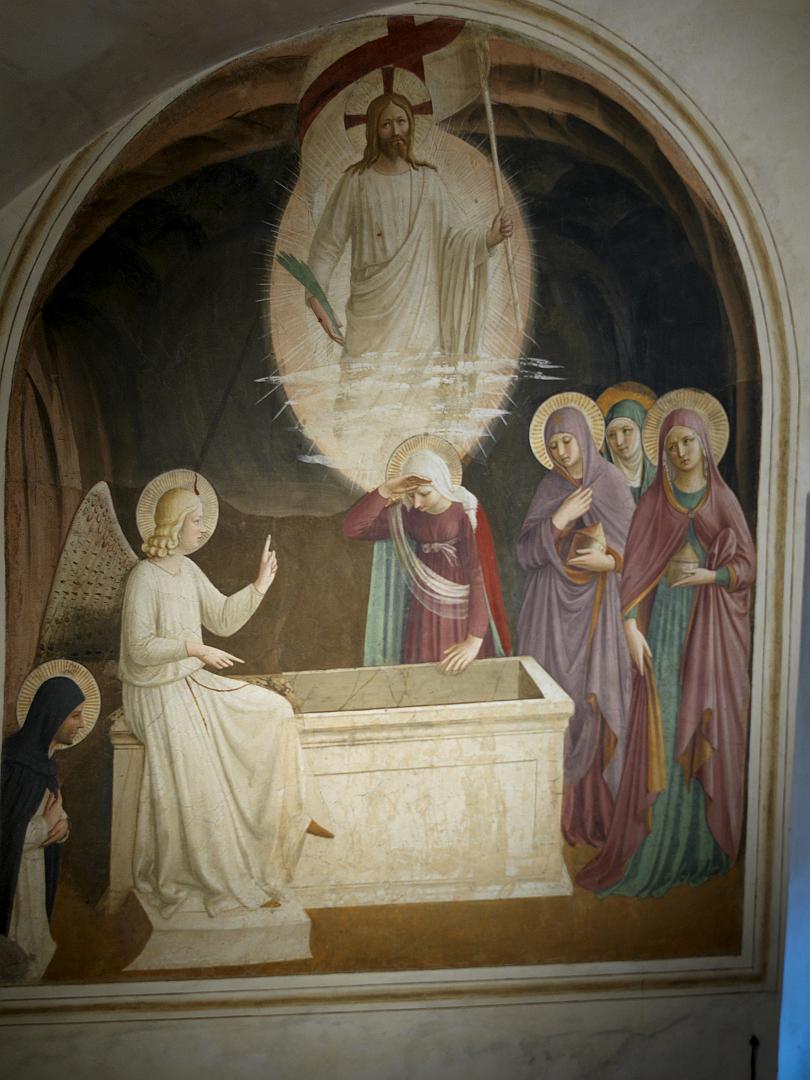
And I will finish with my favourite, a picture of the medieval tradition of The Harrowing of Hell, according to which Jesus descended into Hell, bashed up a few devils and released various worthy souls – prophets who had had to wait until the resurrection before being admitted to heaven. I can recognise John the Baptist, and I think the chap with the forked beard is probably Moses, but I can’t place the others. Perhaps the one grasping Jesus’s hand is Isaiah.
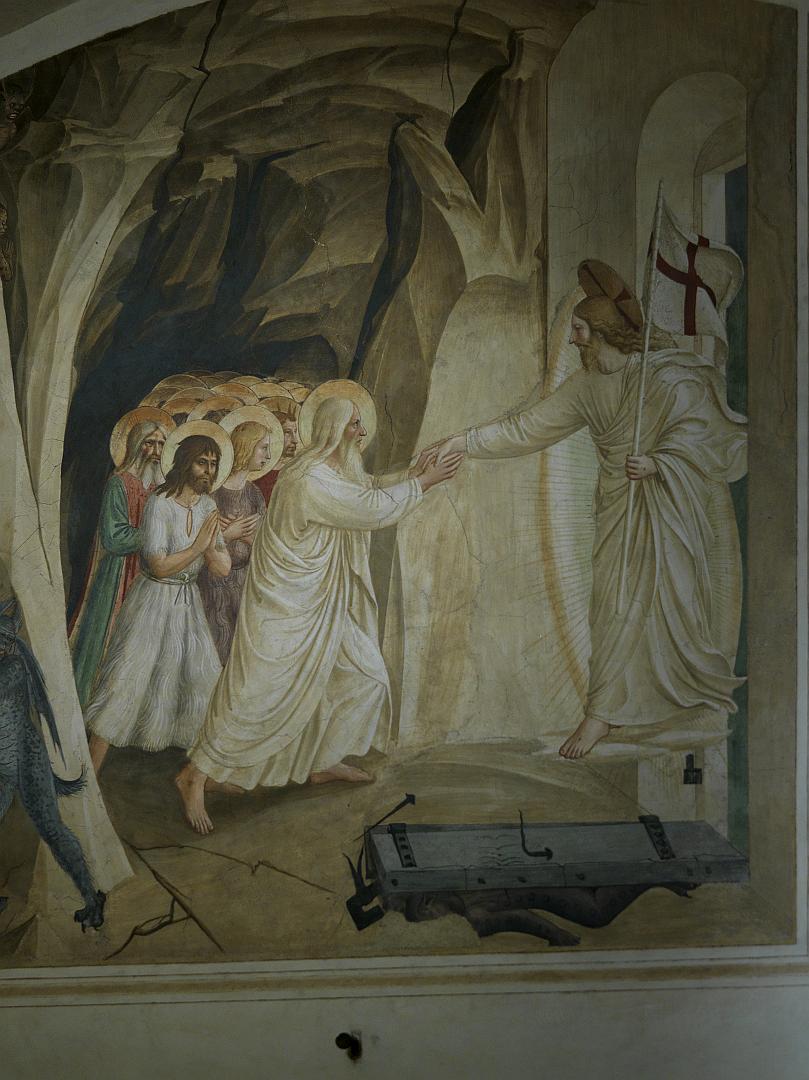
But the best parts are the devil hiding round a corner to the left, and the one who has been squashed flat when Christ smashed the door down. It makes me think of the coyote in the Bugs Bunny cartoons.
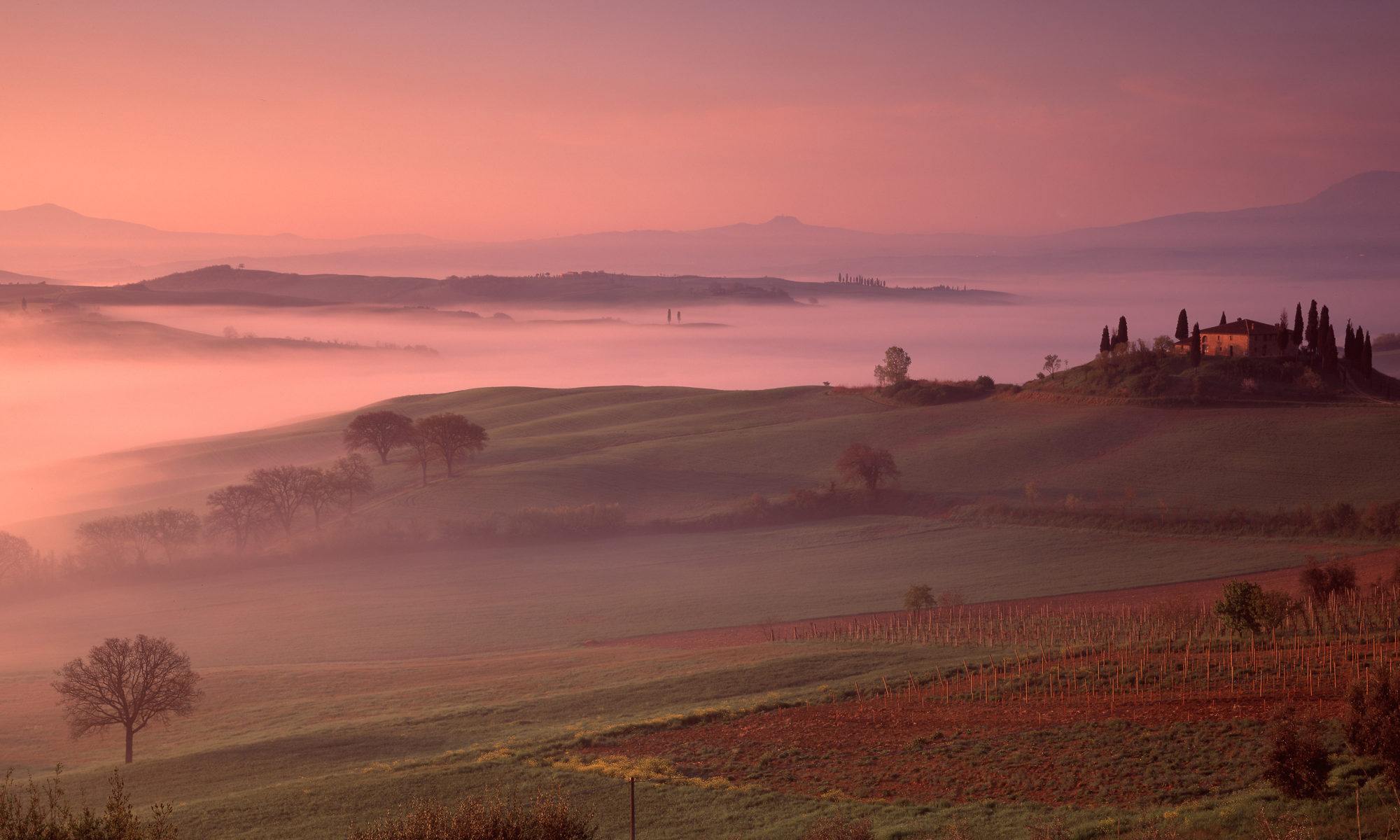
2 Replies to “The Frescoes of Fra Angelico in San Marco, Florence”